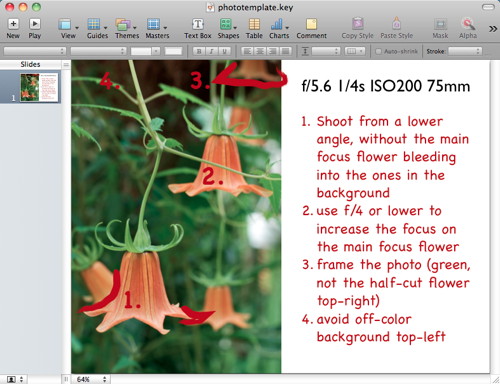Assiduus usus uni rei deditus et ingenium et artem saepe vincit.
[Constant practice devoted to one subject often outdoes both intelligence and skill.]
Cicero
 A few weeks ago, I went to a Botanical Garden with a very interesting young woman … to take photos. We are both still (and will always be) learning how to take photos, so only some photos turned out fine, but even most of those were only almost good.
A few weeks ago, I went to a Botanical Garden with a very interesting young woman … to take photos. We are both still (and will always be) learning how to take photos, so only some photos turned out fine, but even most of those were only almost good.
There often was this tiny detail that looms large if you know where to look: A wrong splotch of color in the background, the sharpness a little bit off, these kinds of things. Digital photography allows you to see the photos on the camera screen immediately after you take them, yet the quality and size of the screen is usually not good enough to notice all these tiny flaws (and the next motif is already calling). But it is a Botanical Garden, the plants will not run away, and at least the tropical flowers will look almost the same — why not visit it again?
I think you learn a lot when you revisit the same motif again. Just make sure you remember what you wanted to avoid. An easy way to remember is using a template, e.g., in PowerPoint or Keynote, and simply annotate what you want to avoid. You can define an image area and text field for the meta data and points to adhere to with this motif. After adding the image, highlight the issues on the photo and write the main points on the slide:

Export the slides as images (jpg) and put them on your mobile phone or your camera (try it out in advance, not all cameras accept .jpgs that were edited), or simply print it (you can print more than one slide on a page, 6 per page usually work fine). In contrast with simply leaving the images on your camera, you do not have to think on the set which points to adhere to, and if you put them on your mobile phone or print them, you do not scroll through the photos again and again.
You will probably make new mistakes when you revisit the same setting (things to avoid next time), and some things might be different (damn plants, and these are slow to move ;-)). But there is no reason why a photographer should not revisit her motifs like a writer would rewrite a text. And I think it is a great way to become better.
Update
A good book to help you evaluate images is “Vom Alltäglichen zum Besonderen: Bilder auf den Punkt gebracht” by Michael Jordan (not that Michael Jordan). Apparently it’s only available in German, but the author shows images and highlights areas of improvement (similar to the slide above, and I guess that’s where I got the idea before transferring it to immediately improving your next photos by revisiting the motif and taking your annotations with you in an easy way to help you remember what to do). You can look into the book but you have to turn a few pages to see the example photos with his annotations.